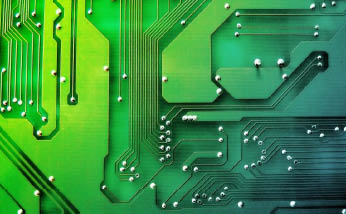By Rob Aldrich
If you’re an IT professional, a data center owner or operator, or are focused on issues of server power management, it’s likely that you’ve considered taking steps to make your IT environment more efficient and sustainable. The benefits—lower energy usage, more efficient operations and reduced costs—are reason enough to investigate how your company could become more energy smart.
There’s certainly no shortage of information on the technologies, measurements and best practices to help you make improvements, but wading through all the information can be a daunting task. That’s why industry consortiums like The Green Grid have created simple, scalable tools and resources to make efficient computing easier. The Green Grid and its members (including end users, policy-makers, technology providers, facility architects and utility companies) work to improve resource efficiency in the business computing ecosystem.
Along with its PUE (power usage effectiveness), WUE (water usage effectiveness) and CUE (carbon usage effectiveness) metrics, Data Center Maturity Model, and recommendations for adopting server power management, virtualization and Eco Mode technology, The Green Grid has compiled a list of five steps to help create a more energy-efficient IT environment.
1. Calculate your PUE. The first step in understanding your data energy consumption is to take an initial assessment of the power you’re using in your data centers–your PUE. This will give you an idea of how efficient your data center is at using and sending power to its servers. Typical numbers for people who have never measured before average between 2 and 3 watts of consumption to deliver 1 watt to the servers. A full description of The Green Grid’s PUE measurement process can be found here.
2. Keep It Cool. Once you know your PUE, you can start addressing facilities issues, and more specifically, cooling. In a case study published by The Green Grid, five cooling initiatives were tested over a period of eight months. The testing determined overall energy savings to be worth more than $300,000 (USD) per year, paying back investments in 15 months.
The specific initiatives included installing OEM variable speed drives (VSDs), upgrading CRAH (Computer Room Air Conditioners & Handlers) units, implementing rack airflow management, moving the CRAH control from the return air temperature to the rack inlet, and increasing the temperature set points of the CRAH and chiller units. Overall, improving cooling technologies can lead to massive energy and cost savings.
3. Virtualization. Making better use of your IT resources is another important factor in the energy-saving equation. To make IT machines work more efficiently, virtualization is a key consideration. Steps include taking an inventory of all IT machines operating in your environment and constructing a plan for consolidation based on your needs. After all, every watt of power that a workspace doesn’t need is a watt of power that doesn’t need to be cooled. To understand how virtualization can help efficiency, check out TGG whitepaper here.
4. The Powers That Be. Natively controlling the power consumption of IT assets using IP-enabled energy management tools provides major efficiency gains. Enterprise energy management systems can monitor and control compute, network and storage assets.
Servers are a good place to start, and server power management (SPM) is a tool that many data centers are adopting, and can save as much as 33 percent of the energy used by a server, without affecting performance. There are a variety of ways that data centers of all sizes can take advantage of these new methods. The Green Grid has members-only resources to help understand and tackle the issues around SPM.
5. Future Forward: Carbon and Water. Facebook recently became the first company to publicly announce its water usage effectiveness, a metric developed by The Green Grid. Understanding the WUE—and even the carbon usage effectiveness—measurements will keep you ahead of the game, and with companies like Facebook taking the lead, WUE promises to be an increasingly important measurement going forward.
Rob Aldrich is a board member of The Green Grid and an energy efficiency expert at Cisco and the technical lead for Cisco’s Energy Optimization Services.









